#sundaland
Photo

Coastlines of the Ice Age Sundaland,
406 notes
·
View notes
Text
a too-common misconception about the origins of filipinos is that we are all descended from the aeta. we are not. “aeta” refers to a specific ethnic group native to certain places in luzon such as zambales and pampanga, but is also commonly used as an umbrella term for several related ethnic groups across the philippine archipelago. they are identified by physical characteristics such as dark skin and very curly hair (leading to a false belief that they are descendants of black africans) as opposed to those of majority of the country who have lighter skin and hair that is either straight or of looser curl patterns (also falsely believed to be markers of the so-called malay race.)
the aeta are an ethnic minority; as of 2010, there were a documented <100,000 out of millions of filipino citizens identifying as such. it is clear majority of filipinos are not of aeta descent. so where does this myth that all filipinos “descend” from the aeta come from?
generations of miseducation has led the average filipino to believe that, out of the hundreds of ethnic groups native to the philippines, it is the aeta in particular who are the original people who came to the philippines prior to the advent of the austronesian expansion. in other words, filipinos view the aeta as a pure people who are remnants of the old world.
this is not true because:
DNA evidence from the luzon aeta, mamanwa ata, batak, & other similar peoples indicate ancestry from BOTH the earliest settlers of what is now the philippines (commonly referred to colloquially and in the literature as negritos but also sometimes as basal australasians and first sundaland peoples) and later migrants associated with the austronesian expansion.
all other native populations in the philippines save for igorot peoples also show admixture from both negrito/basal australasian/first sundaland peoples and later migrants, most significantly the austronesian speakers. what’s notable is the varying degrees of admixture among aetas and non-aetas.


two graphic charts showing the peopling of the philippines and genetic admixture in modern populations. taken from the study, “Multiple migrations to the Philippines during the last 50,000 years” (2021) by Maximillian Larena et al.
i think what has happened is that “aeta” has become synonymous with the earliest inhabitants of the philippines, the real name for these ancient peoples being unknown to us moderns. it is only the flawed tendency to view indigenous peoples as unchanging relics of the past that has led to the biggest mistake filipinos make when discussing our origins: that is, the constant misuse of the term “aeta” to mean “pureblooded original people” when in reality aeta peoples are also descended from later migrants. when people say filipinos are descended from the aeta, they really mean to say filipinos are descended from the first settlers.
aeta peoples are our contemporaries; they are not our living progenitors but their own people with their own languages, ancestral lands, cultures, and histories.
#philippines#indigenous peoples#pseudoscience#southeast asia#genetics#aeta peoples#sundaland#basal australasian#first sundaland peoples#austronesian#x
84 notes
·
View notes
Text

2 notes
·
View notes
Text
La beauté des ailes en oeil de tigre du papillon brahmane géant [vidéo]
New Post has been published on https://www.2tout2rien.fr/la-beaute-des-ailes-en-oeil-de-tigre-du-papillon-brahmane-geant-video/
La beauté des ailes en oeil de tigre du papillon brahmane géant [vidéo]
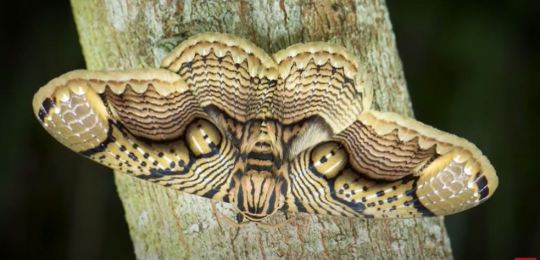
#aile#Birmanie#borneo#brahmaea hearseyi#Brahmaeidae#brahmane#branche#chine#David Weiller#himalaya#lepidoptere#malaisie#nuit#oeil#papillon#Philippines#photographe#Sabah#Sundaland#tigre#vidéo
0 notes
Text


[ID: a photo of a sunda clouded leopard and a photo of an oncilla. the sunda clouded leopard is a medium sized cat with a tan coat covered in large spots, with smaller spots inside. the oncilla is a small cat with a tan coat covered in small rosettes. end ID]
note: the Sunda clouded leopard is also known as the Sundaland clouded leopard, Enkuli clouded leopard, Diard's clouded leopard, and Diard's cat. the oncilla is also known as the northern tiger cat, little spotted cat, and tigrillo
#little cat showdown poll#sunda clouded leopard#oncilla#tigrillo#northern tiger cat#little spotted cat#sundaland clouded leopard#enkuli clouded leopard#diard's clouded leopard#diard's cat
47 notes
·
View notes
Text
Moth Of The Day #261
Brahmaea hearseyi
From the brahmaeidae family. Their wingspan ranges up to 200 mm. They can be found in Northeastern Himalaya, Burma, Western China, Sundaland and the Philipphines.
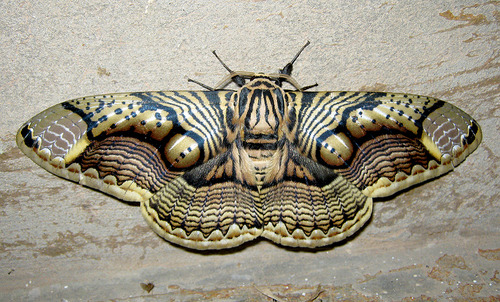
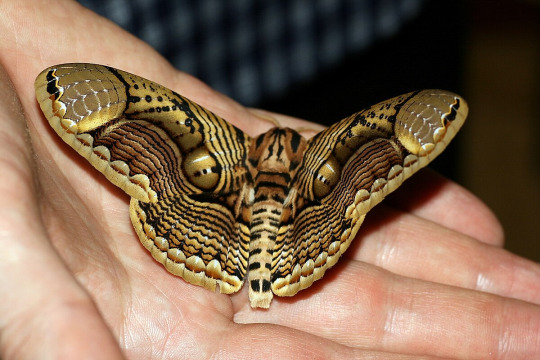
Image sources: [1] [2]
#moth#moths#lepidopterology#lepidoptera#nature#pretty moth#bugs#insect#moth of the day#motd#beautiful moth#interesting moth#asian moth#brahmaea hearseyi#brahmaeidae moth#brahmaeidae#lepidoptery#entomology#insects#bug#bugblr#invertebrates
900 notes
·
View notes
Text
paleonationalist who wants to lower the sea level by 400 feet so ancestral homelands like doggerland, beringia, and sundaland can be reclaimed
67 notes
·
View notes
Text

Hello everyone, I've decided to show more of my Art and the Original Series I'm working on!
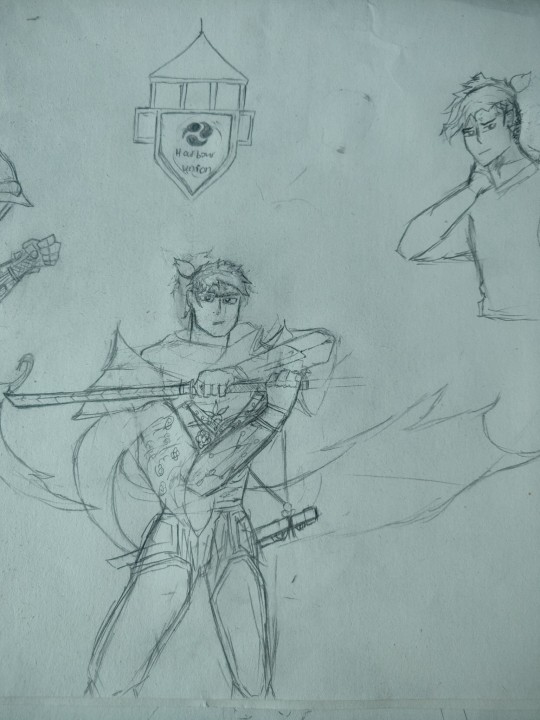

I haven't coloured him yet but here's Okazaki Takeo
A Ryukyuan Vigilante of the Eclipse Bay, born and raised as a Fisherman's Son in Sundaland before joining the Nágara, an Organisation that deals with Vigilante Justice and Private Detective Work.
The Series is called "Yinpunk" and more Characters are coming out! It's Science Fantasy and is set in another Earth.


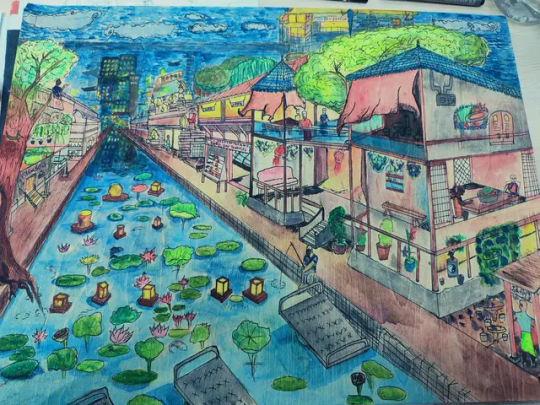


Here are some current and Old concept Art of Locations within the Series
#original characters#original story#original art#traditional art#soon to be Digital Art#sketchbook#watercolor painting#oil painting#my characters#my art#he's my little meow meow#futuristic#lunarpunk#solarpunk#oc
6 notes
·
View notes
Note
I think a lot of people forget that pagan myths and religious texts are often based around events that happen but misremembered or people were not being able to interpret correctly.
Dragons: Most likely ancient humans finding dinosaurs bones but not comprehending them.
Giant snakes like the hydra, Apophis, orochi, and Jorgumdar: humans finding remains of giants snakes or if I got my cavemen stuff right. Prehistoric humans fighting the giant snakes that once roamed the earth.
You mentioned a comet, now did that comet created massive tsunamis and such that lead to the creation of the great flood, the Greek monster Typhon, etc?
Atlantis is a allegory yes, but we keep finding massive landmass that submerged into water. Or even human temples and such in the sea. So my question is: how much of human history have been lost to time by nature?
They also ignore that oral history and mythology is how ancient cultures passed down knowledge. Pretty much every ancient myth is either based on something that happened or is designed to teach some sort of lesson.
As for the flood, yes, exactly. Pretty much every corner of the world has a flood myth, and they all pretty much go more or less the same way. The gods, or God, is angry with humanity, sends a warning to one man saying that a flood will come; either that god or another god tells the man to build a boat, or an ark, or an underground sanctuary, and hide everything that needs to survive the flood; once the flood is over, the man and his family repopulate the Earth. There's also usually a warning that another world ending cataclysm will happen if humanity refuses to obey the gods/loses its way/sins too much/etc. And a lot of those stories say that the new apocalypse will be fire. Keep in mind these are stories from civilizations that conventional history says never met, and could never have met. So if that's true (and there's some doubt on that front, tbh) then all these cultures either were talking about the same event, or someone went around the world and spread this story for some reason, or both.
It's actually really fascinating if you do a deep dive. There's a lot of evidence out there that human civilization is a lot older than conventional historians and archeologists are willing to admit. And that a lot has happened in our past that those same people refuse to even allow to be studied. For example, there's evidence to suggest that Atlantis may have been in Indonesia in the sunken land of Sundaland. But after some promising early findings--including a giant temple that was dated to just after the end of the last ice age (when humanity was supposed to still be all hunter-gatherer societies and not even remotely able to build giant stone temples), with even older layers of the temple buried deeper that were discovered by ground penetrating radar--the Indonesian government shut down all study of that site because the head of some archeology department in the government publicly petitioned to have it stopped and their funding redirected towards her own projects. Archeology is a very stubborn field of study, and archeologists are very, very reluctant to accept any new information that contradicts what they already "know". Honestly, ancient alien nonsense has done a lot of harm to alternative historians, because they're now the popular face of all non-conventional history. Even though a lot of what they show as evidence of aliens is actual, real evidence that currently accepted conclusions in archeology might be wrong, it's hard for anyone to study those things seriously partly because it's tied to "ancient aliens". But that's a whole other rant. Basically don't trust academia, especially entrenched academia that refuses to question its own dogma.
25 notes
·
View notes
Text
Biodiversity Hotspots-

The concept of biodiversity hotspot was first given by Norman Myers in 1988. Later, in 1989, Conservation International (CI) adopted Myers’ concept and defined it further. A region is classified as a Biodiversity Hotspot if it meets undermentioned two criteria:
It must have at least 1500 vascular plants (> 0.5% of world's total) as endemics
It must have 30% or less of its original natural vegetation or it must be threatened.
There are 36 biodiversity hotspots across the world. These represent just 24% of the earth’s land surface but support nearly 43% endemic species of birds, mammals, reptiles and amphibians.
Biodiversity hotspot in India -
India has four biodiversity hotspots of the world these include
Himalayas: It includes the entire Indian Himalayan region.
Indo- Burma: It includes entire north-east India (except Assam) and Andaman group of islands.
Sundaland: includes Nicobar group of Islands.
Western Ghats.
Megadiverse Countries -
This concept was given by Conservation International in 1998. It refers to the world's top biodiversity-rich countries. To qualify as a Megadiverse country, a country must:
Have at least 5000 of world’s plants as endemics.
Have Marine ecosystems within its borders.
Apart from these two, some other criteria like species and ecosystem diversity are also taken into consideration.
There are 17 Megadiverse countries that account for at least two-thirds of all non-fish vertebrate species and three-fourths of all higher plant species. This classification demonstrates how a small number of countries hold a large proportion of global diversity and their four have greater responsibility for conservation and biodiversity management. India is one of the Mega-divers countries of the world.
3 notes
·
View notes
Text
Platerodrilus : cas de néoténie chez les insectes
See on Scoop.it - EntomoScience
Les forêts tropicales abritent des insectes aux femelles néoténiques qui ressemblent à des trilobites. Partez à leur découverte !
janvier 29, 2024
Par Benoît GILLES
[Image] Sentier dans les montagnes de Crocker Range à 2000m d’altitude, avec une souche pourrie et des larves de Platerodrilus rampant à sa base (Source : Makarov & Kazantsev, 2022) – Femelles néoténiques du genre Platerodrilus : A) Bornéo, Mont Kinabalu – B) Boneo, Poring – C) Mindanao, New Bataan – D) Femelle néoténique du genre Macrolibnetis, Malaisie, Cameron Highlands (Source : Masek et al., 2015)
Le genre Platerodrilus est constitué de 42 espèces réparties en trois zones géographiques : Indo-Birmanie, Sundaland (Malaisie, Bornéo, Sumatra et Java) et Philippines (comprenant l’archipel de Palawan)
Bernadette Cassel's insight:
(Re)lire aussi
Larve, nymphe ou adulte ? Le cas de la femelle de Platerodrilus dite "coléoptère-trilobite" - De www.mdpi.com - 28 novembre 2023, 18:39
https://www.scoop.it/search?q=Platerodrilus
0 notes
Text
Pilanduk shows evidence for specialized deer hunting and freshwater mollusc consumption during the Last Glacial Maximum. The results add to the evidence for the shifting foraging behaviours of modern humans occupying variable tropical environments across Island Southeast Asia.
The research describes new archaeological data for the Last Glacial Maximum (LGM) of the Philippines based on the site of Pilanduk Cave on Palawan Island. We present new radiocarbon dates and faunal analyses for the site. Our new dates confirm the site’s LGM antiquity at 20,000 to 25,000 years ago. Based on these associated dates, we also present the oldest fossil remains representing the nine vertebrate species found in Pilanduk, which include the iconic tiger (Panthera tigris). Pilanduk Cave also provides the only substantive subsistence record known for the LGM for the entire Philippine archipelago.
2 notes
·
View notes
Text
Magic Hands, ein Cover entsteht
Du möchtest gerne wissen, wie das Cover für ein Musikstück entsteht? Ich habe eines für „Herby Sundaland“ erstellt und lasse Dich teilhaben, wie ich die Papierzeichnungen in „Affinity Photo II“ zusammengeführt und farbig gemacht habe.
Das Musikstück MAGIC HANDS von Herby Sundaland kannst Du unter anderem unter folgenden Links anhören: https://listen.music-hub.com/nnbH5W oder in Spotify unter:…
youtube
View On WordPress
1 note
·
View note
Text
[Paper] Prehistoric human migration between Sundaland and South Asia was driven by sea-level rise
via Communications Biology, 04 February 2023: This study traced prehistoric sea-level rise in Southeast Asia to human migrations. #sealevel #humanmigration #southeastasia
via Communications Biology, 04 February 2023: This study traced prehistoric sea-level rise in Southeast Asia to human migrations.
Rapid sea-level rise between the Last Glacial Maximum (LGM) and the mid-Holocene transformed the Southeast Asian coastal landscape, but the impact on human demography remains unclear. Here, we create a paleogeographic map, focusing on sea-level changes during the…
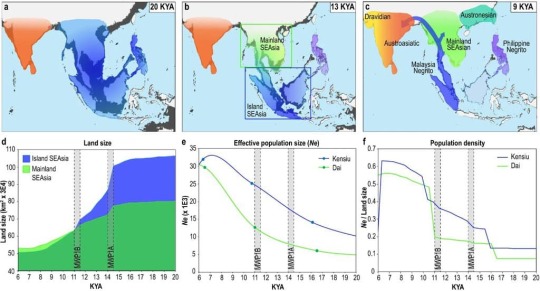
View On WordPress
0 notes
Photo
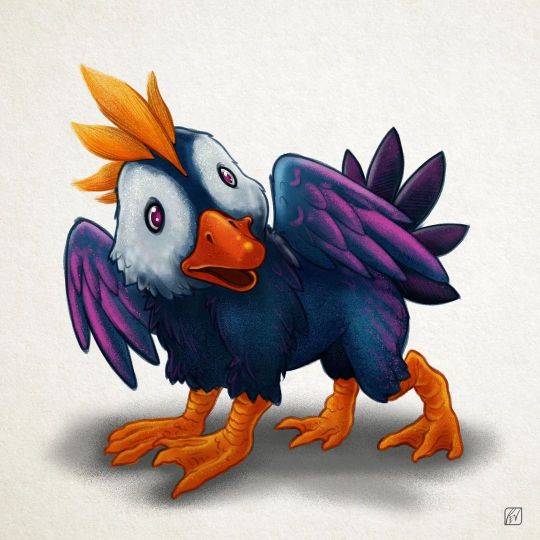
The Anatogriffs, unlike the Hyperboreans and the Indian griffins, are usually found in the lush jungles of Sundaland. If they are not seen flying above the treetops, they may be seen paddling through rivers and bathing under waterfalls. Unfortunately, they cannot sing, as they can only produce very annoying high-pitched squawks. Anatogriffs are very docile creatures and because of their good nature, approach humans with no fear. It is for this very reason they are now almost extinct. They proved an easier catch compared to the greater griffins. Another drawing challenge from @monsters.go , with amazing monster design by kid artist Cooper. Swipe to see the original drawing. #monstersgo #MonstersGoCooper #monsterdrawingchallenge #drawingchallenge #artchallenge #cartoonchallenge #drawing #watercolor #pencils #illustration #illustrationartists #creature #creaturedesign #creaturedrawing #drawthisinyourstyle #drawthisinyourstylechallenge #drawingart #monster #storytime #storytelling #griffin #duck https://www.instagram.com/p/CnMXXJwPjWV/?igshid=NGJjMDIxMWI=
#monstersgo#monstersgocooper#monsterdrawingchallenge#drawingchallenge#artchallenge#cartoonchallenge#drawing#watercolor#pencils#illustration#illustrationartists#creature#creaturedesign#creaturedrawing#drawthisinyourstyle#drawthisinyourstylechallenge#drawingart#monster#storytime#storytelling#griffin#duck
0 notes
Text
Moth Of The Day #282
Oriental White Silk-moth
Penicillifera apicalis
From the bombycidae family. They can be found from the north-eastern parts of the Himalaya to Sundaland and the Philippines.

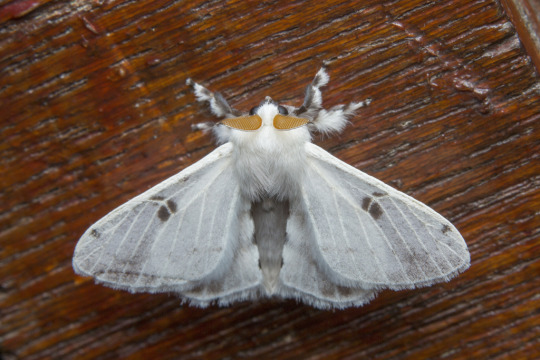
Image sources: [1] [2]
#moth#moths#lepidopterology#lepidoptera#nature#pretty moth#bugs#insect#moth of the day#motd#lepidoptery#entomology#insects#invertebrates#bugblr#bug#penicillifera apicalis#oriental white silkmoth#oriental white silk-moth#oriental white silk moth#bombycidae#bombycidae moth
401 notes
·
View notes